The Short Life of a Bumblebee
Did he like tunafish? Get drunk on pollen nectar? One thing's for sure, he knew his mission: mate and pollinate.
Another dead bumblebee in the hoop house.
This one is so perfectly life-like in its death. Not a wing out of place. I’m wishing, hoping, that he’s playing possum, that soon his fuzzy body will reanimate, his striped rump will wiggle, his antennae will bobble.
Those lacy wings, translucent and deeply veined, seem disproportionately big for his body. Perhaps he is the Icarus of bumblebees and has flown too close to the sun, despite warnings. We’ve all done that.
I crouch down to look at him and realize that all this time – all these years that I’ve been watching bumblebees in the garden – I’ve been looking at them but not really seeing them. I’ve let a camera get between them and me. I’ve also let caricatures and cartoons and characters in children’s stories stand in for the real thing. (Hello, Mrs. Tittlemouse and Babbitty Bumblebee!)
And now here is this fellow – for he is most likely a male who’s left the nest, never to return – giving me the chance to see him in death, not life. I wonder if we see people better in death, too. No, I don’t wonder – I know we do, because we don’t really, truly “see” them in life. We set them up as characters in our own personal plays, with narratives that work for us. Only after they die do we realize that they’ve played different roles for different people in many plays. And that none of those roles is truly who they are. They are their own unique selves.
Alas, I will probably never know much about how this particular bumblebee conducted himself, what he loved (lavender or clover?), whether he mated with the queen, if his powerful sense of smell ever got him into – or out of – trouble, who his best friend in the colony was before he got kicked out of the nest (as most male bumblebees do). Did he like tuna fish? Enjoy classical music? Get drunk on fermented nectar? (It happens!) No, I can only be sure of two things – his mission (or missions) in life: to mate and pollinate.
Why bumblebees wind up stuck in my hoop house I’m not sure. I understand how the warm air and the earthy scent lures them in. Yet once inside they always seem to fly up to the highest point and prance frantically, wings humming and buzzing, along the inside of the plastic. Even with the doors open and the sides of the hoop house rolled up, they can’t seem to find an exit, or don’t want to – even when I try to gently encourage them with a broom.
My latest theory is that perhaps they are seeing their reflection in the clear plastic and thinking, “Oh, there’s a hot chick, maybe I can get her attention!”
My sadness about the death of this bumblebee is compounded by my new-found knowledge that bumblebees – male bumblebees – live only four to six weeks. There are fifty different species of bumblebees in North America, so I can’t be completely sure that some lucky studs don’t get to whoop it up for eight or even ten weeks. But any way you look at it, their life is short. (The queen can live as long as a year.) No wonder they spend evenings tucked inside the soft petals of rose blossoms and afternoons slumbering on sunflowers (and zinnias!).
But in between naps, bumblebees are super achievers, and should really be given a medal of honor for what they accomplish in their short time on this earth. They pollinate like crazy, making them key players in agriculture – especially tomato and blueberry crops. They help to increase genetic diversity by spreading pollen from plant to plant. And they use their powerful wings to “buzz pollinate,” which spreads more pollen and generally increases fruit yields. They feed on bad pests and, like many pollinators, help the environment by absorbing carbon dioxide and releasing oxygen.
I am trying to curtail my anthropomorphizing of every creature I meet in my wild kingdom, from dragonflies and the praying mantis to bunnies and chipmunks. But as the world gets stranger and stranger, and we are faced every day with the absolute worst of human behavior – greed, cruelty, deceit, humiliation, intolerance, sabotage – I can’t help but be drawn to the purposeful lives of the four-, six-, and eight-legged creatures around us and wonder why (where?) the evolution of we bipeds went so off course.
Often I go down to the hoop house just to clear my mind and recharge, but also I look forward to entering the world of the creatures (Beatrix Potter by my side) who are always there. I hope to learn something from them and reemerge with optimism and determination that if we all just flap our wings in unison we can mitigate the spread of malevolence. 🐝





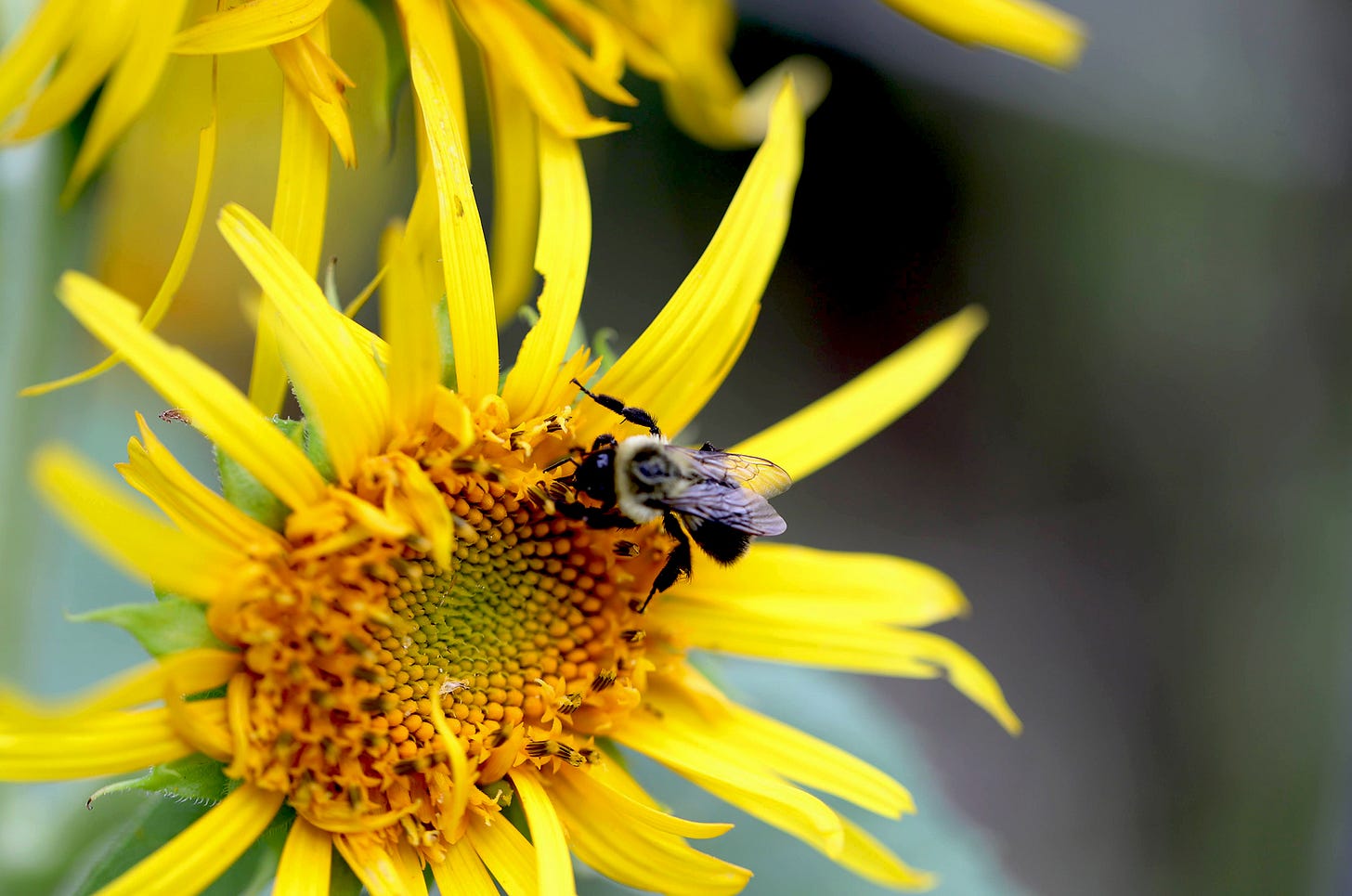

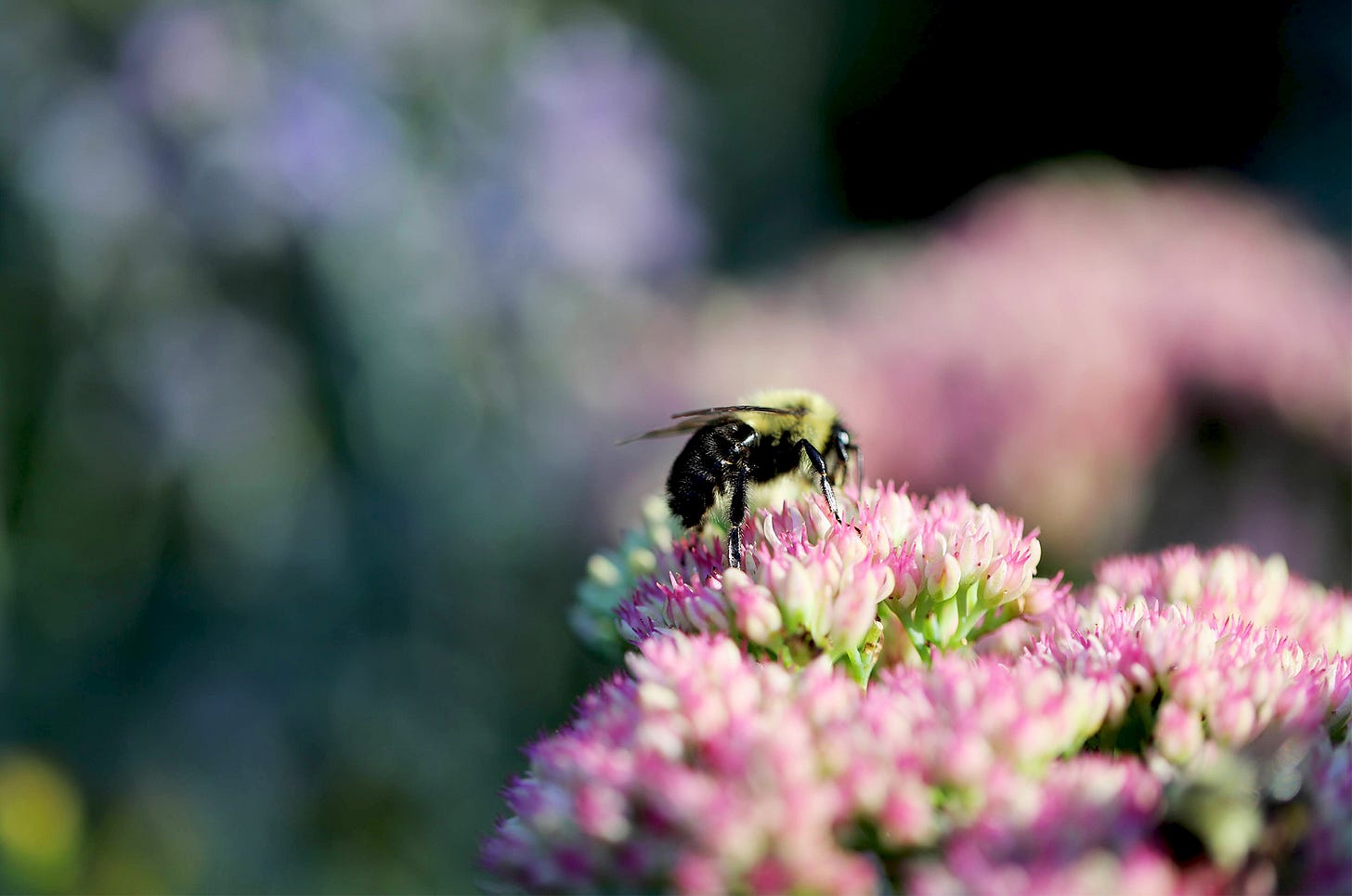
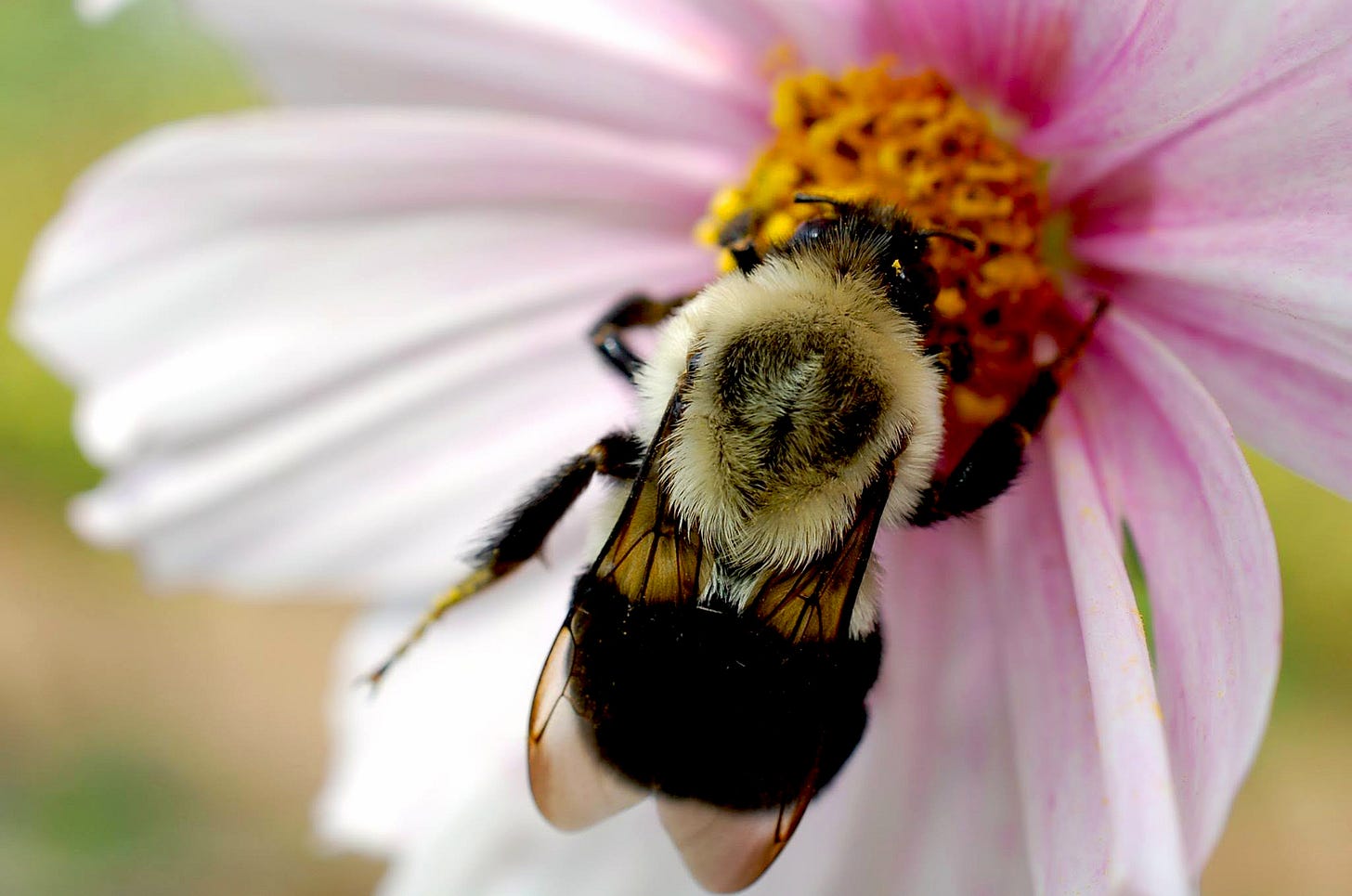
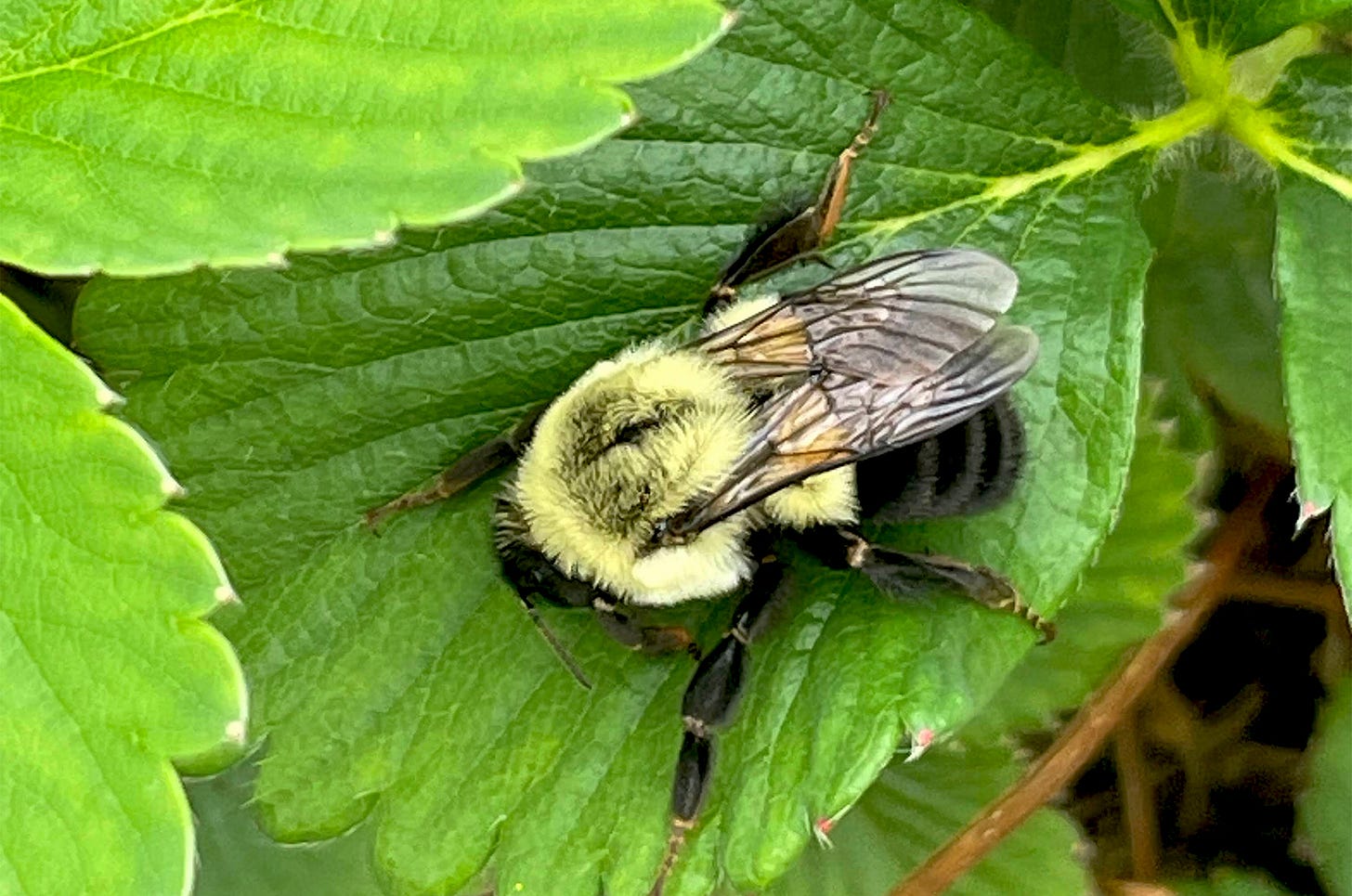
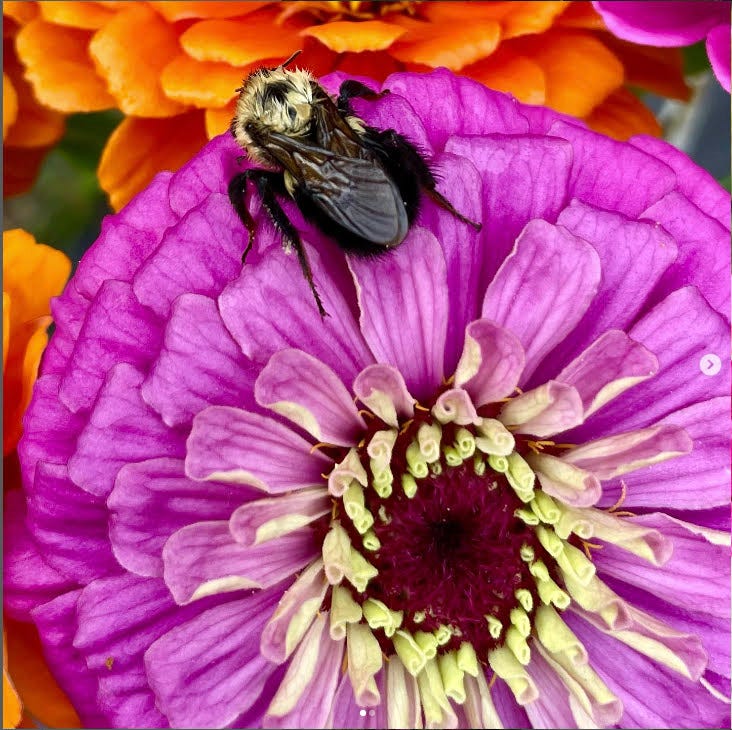
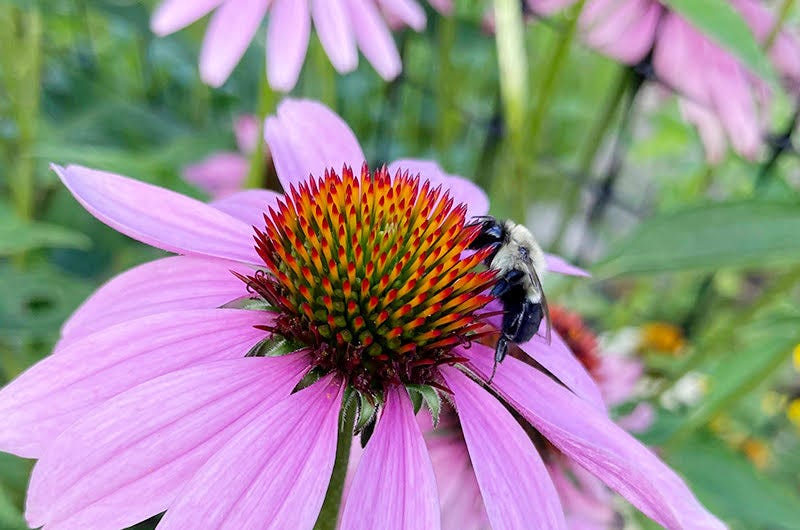
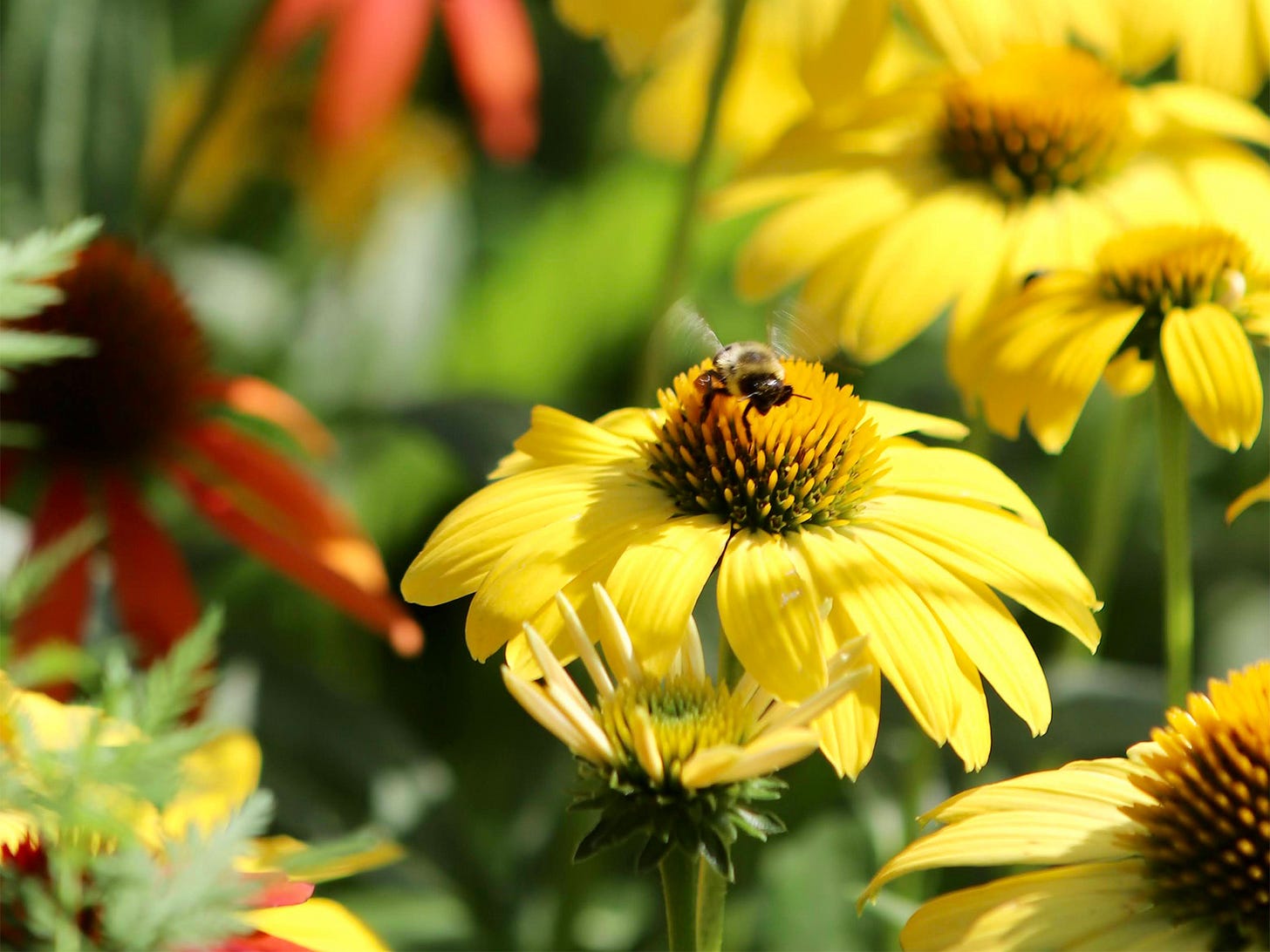

I liked the insight that we don’t see bees or people fully when they live, but only when they die. It’s so true—as you say—that when people die we find out they were players in so many different dramas on different stages with people we didn’t know or hardly knew. How you got there from a dead bumblebee is real artistry—thanks for that.
I think that’s beautiful - your anthropomorphizing. If anything, a deeper and more thorough understanding of how we humans are just another living being is a big part of the solution. And it includes not just animals, but insects too. And plants. Flowers. Trees. Fungus. It feels good to feel a part of it. ❤️